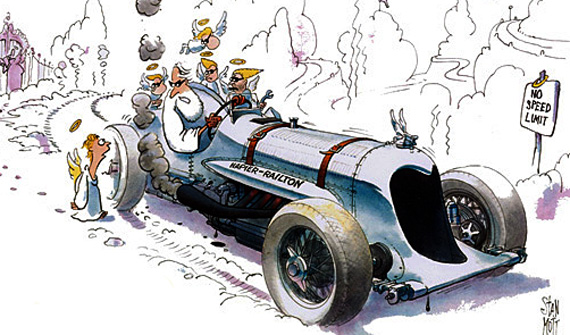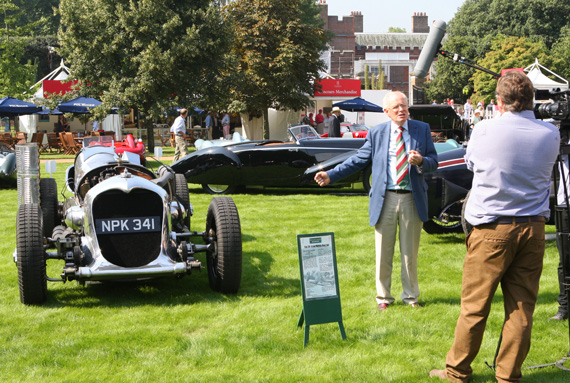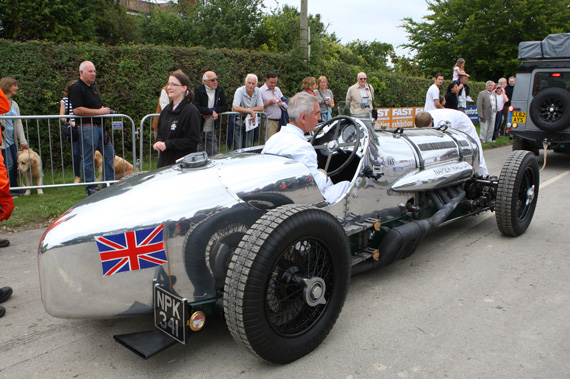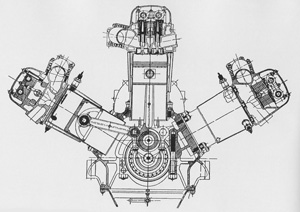Last week the owner of the Delage-Bequet described driving his aero-engined Grand Prix car; this week the Brooklands Museum Director, Allan Winn, takes us on a spin with the Napier W12-engined Railton, the car which conquered Brooklands for all time. We think you’ll find his words more informative and interesting than the videos, found at the end of the article. Our thanks to both for these exclusive stories Also, thanks to Paul Stewart, Brooklands Museum Marketing and PR Manager, and VeloceToday’s Jonathan Sharp
Driving Impressions by Allan Winn, Brooklands Museum Director
First off, the Napier-Railton is an enormously powerful, iconic machine. However, the overwhelming impression you have from driving it on a regular basis is how benign and user-friendly it is. That’s not to say it is an easy car to start or drive, but it is an extraordinary, well-behaved machine.
Starting
Starting the Napier requires concentration. There is nothing like a choke. The first thing you have to do is to turn the fuel on, then pump the Ki-Gas about eight times, which squirts neat fuel into the inlet manifolds. There is an enormously long distance from the triple carb throats to the rearmost pistons. Then, you need to lock the Ki-gas pump on the dashboard so the handle does not come loose.
Then it’s a case of rocking the car to get it into first gear on the three-speed gearbox, switching on the two magnetos (with what looks a lot like a Victorian electrical house switch), then releasing the fly-off handbrake and getting up to four people to push furiously up to a walking pace. Finally, drop the clutch – after alerting the pushers – and it will fire on the first or second compression.
As soon as it picks up to 12 cylinders, you knock it into neutral, then stop and check that the oil pressure is up to 65 psi and that you haven’t had a spitback through the carbs and you don’t have a fire burning in the inlets. (If it did, any fire should get sucked right back into the carbs and you wouldn’t have a problem.)
Warm up procedure
One must bear in mind that the “broad arrow” Lion W12 is huge, and requires 52 liters of coolant and around 15 gallons (not quarts) of Castrol GP 50. Warming up means bringing the coolant up to about 70 degrees C which can take up to ten minutes. We run it at about 1,000 rpm for first couple of minutes then bring it up to 1,100-1,200 rpm to hasten the process. We are using a waterless vintage coolant which has very good non-corrosive and wetting qualities and keeps the car running much cooler than it did on a water/antifreeze mix. In normal running it’s extremely difficult to get any reading at all on the oil temp gauge.



